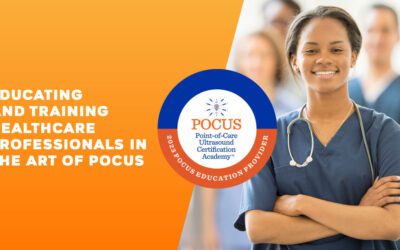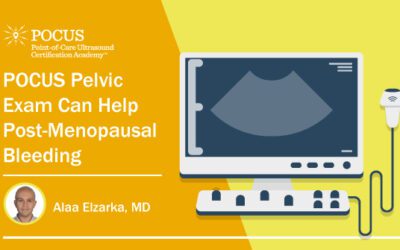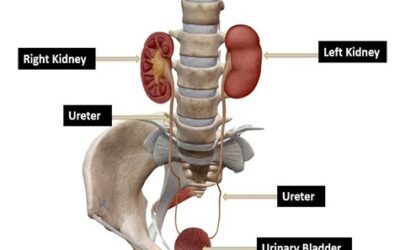The use of portable, handheld ultrasound devices is rapidly expanding across specialties. In the field of Musculoskeletal (MSK) medicine, an MSK ultrasound can be a great tool to help diagnose and guide interventional treatment procedures for a range of injuries and chronic conditions.
By using high-frequency sound waves to produce images, MSK ultrasounds are powerful screening tools used to examine muscles, joints, ligaments, tendons, nerves, and soft tissues of the body. MSK Point-of-Care Ultrasound (POCUS) is especially effective in detecting common MSK conditions. These include joint dislocations, injuries to muscles, tendons, ligaments, fractures, joint effusions, and joint pain. Unlike traditional imaging modalities, the clinician performs and interprets POCUS instantly. It helps professionals to determine the nature of an injury and inform treatment.
Due to its ease of use, affordability, and safety, an increasing number of physicians have integrated MSK POCUS as a diagnostic and therapeutic aid to improve the overall patient experience and expedite diagnosis and treatment. Implementing POCUS into your clinical practice can improve diagnostic precision, reduce radiation exposure, lower costs, and decrease time to diagnosis without an increase in adverse events or missed diagnoses.
MSK POCUS has also found its way out in the field. Physicians on-site at sporting events are often called upon to treat acute trauma and musculoskeletal injuries. Imaging modalities are sometimes unavailable and may lead to unnecessary transfers to the emergency room. However, a medical provider can perform routine guided procedures on location with MSK POCUS.
Another great use of MSK POCUS in sports medicine is assessing body composition when monitoring athletes’ overall health and nutrition status. While in the field, portable and accurate measurement tools are ideal when determining body composition and overall musculoskeletal health.
Alexa Chandler is a doctoral candidate studying exercise science at the University of South Carolina. While working toward her Master’s at Rutgers, The State University of New Jersey, she studied BMI calculations using an ultrasound device.
In a recent episode of the Point-of-Care Ultrasound (POCUS) Certification Academy’s™ podcast, FOCUS on POCUS™, Ms. Chandler shared her experience in using ultrasound to assess body composition changes to get an idea of workload demands over time. During the conversation, she addressed the use of ultrasound to determine the body composition of very lean, adolescent, pre-professional ballet dancers and her role in using ultrasound to calculate body fat percentages and assess muscle and tendon thickness changes.
Ms. Chandler decided to explore using ultrasound to assess the dancer’s overall body composition to aid athletic development. She was able to track muscle and tendon thickness and regional body fat changes.
Ms. Chandler noted, “If you have an athlete who has a lot of muscle, their height to weight ratio can be thrown off, so that’s when you want to delve into body composition and see their height to weight ratio. If their BMI is high, is it because of excess body fat, or is it because of extra muscle?”
When BMI measurements are not accurate because of excess fat or extra muscle, POCUS allows you to provide a detailed look at body composition and muscle and tendon thickness changes, which can be important in the rehabilitation process and overall training responses. The accessibility of POCUS allows you to go directly to the athlete in the field to address issues and treatment immediately.
When asked about the benefits of using ultrasound in her research, Ms. Chandler stated, “We can look at changes in muscle thickness since that was an issue among these dancers; because we wanted to see that they were maintaining regional muscle thickness. We can also see changes in regional body composition.” She continued, “It’s very portable, and it is more affordable than many other techniques. If we were working with an athlete on the basketball team, we could bring our device down to them, or maybe the sports medicine physician already has one that they are using for treatments, and we could use that.”
Ms. Chandler also discussed the capability of teaching athletic trainers to take quality ultrasound images. Athletic trainers can expand their skills and enhance patient care by utilizing the innovative imaging technology behind POCUS. Athletic trainers can increase training availability through detection and recovery strategies by delivering services to athletes in the field, with a primary focus on injury prevention.
When asked how ultrasound can be used in sports science to aid in athletic development, Ms. Chandler responded, “Changes in muscle and tendon thickness can be significant in the rehab process. You want to make sure that they’re recovering from an injury, that they’re not just getting stronger but that their tendons are also adapting and that the whole joint is getting stronger.” She added, “They can help look at training responses by looking at muscle and tendon thickness, which goes beyond body fat and moves into total musculoskeletal health.”
POCUS allows for practical use as a diagnostic or procedural aid for frontline providers in the field. As this field of practice evolves, the POCUS Certification Academy is committed to ensuring the healthcare community has access to the knowledge and resources necessary to elevate their practices.
Learn more about our Musculoskeletal Certification opportunity, and listen to the rest of Alexa’s great insights.
























